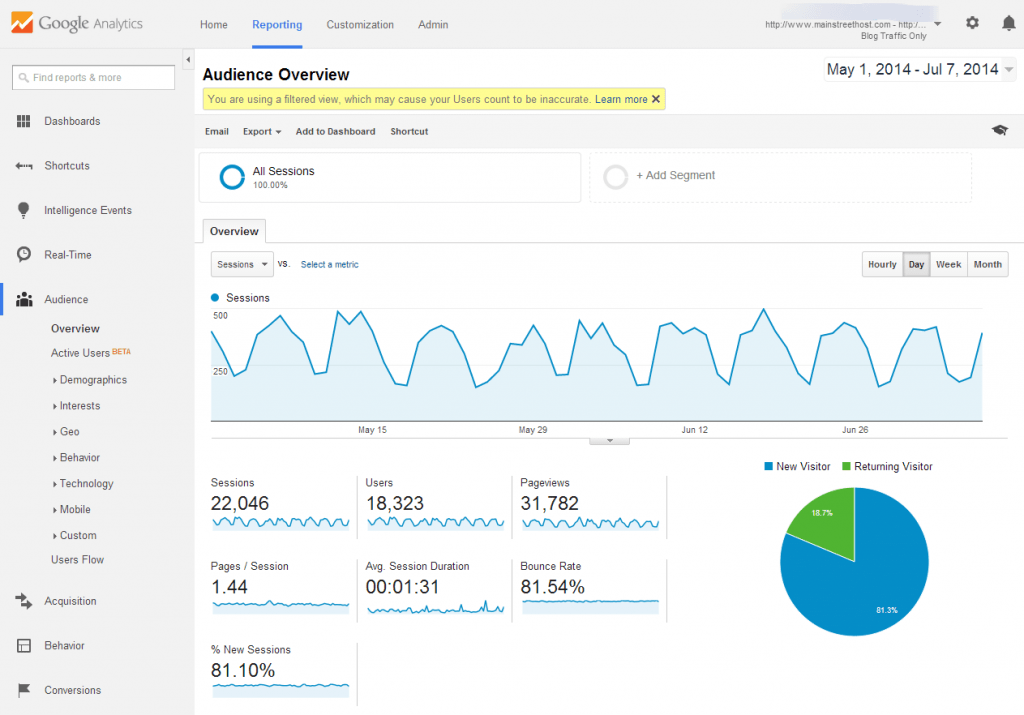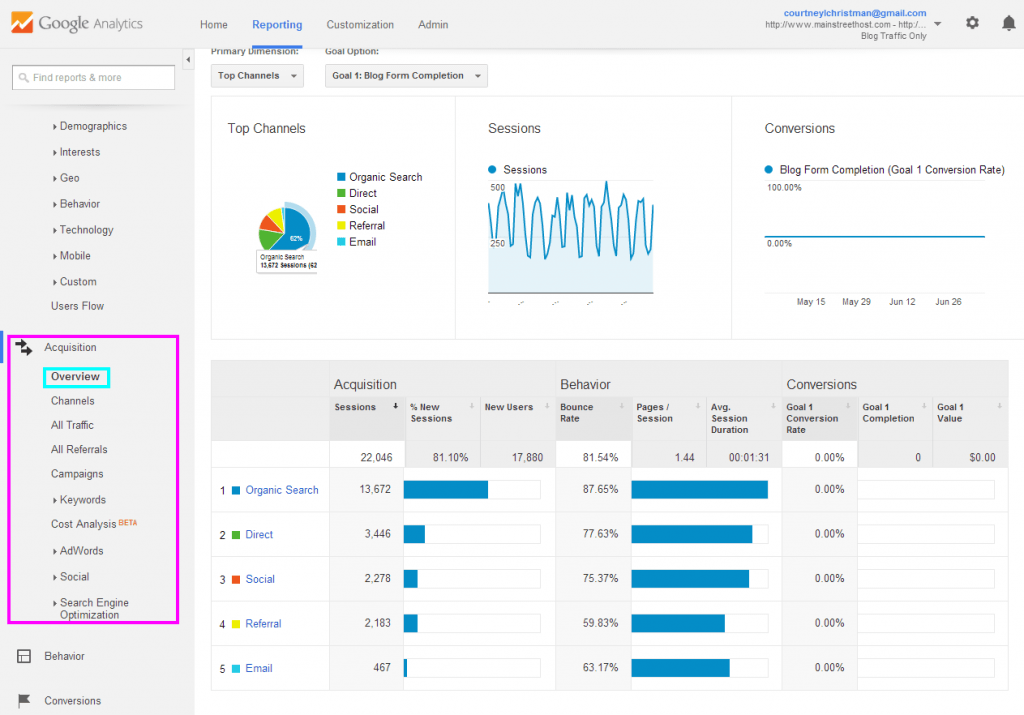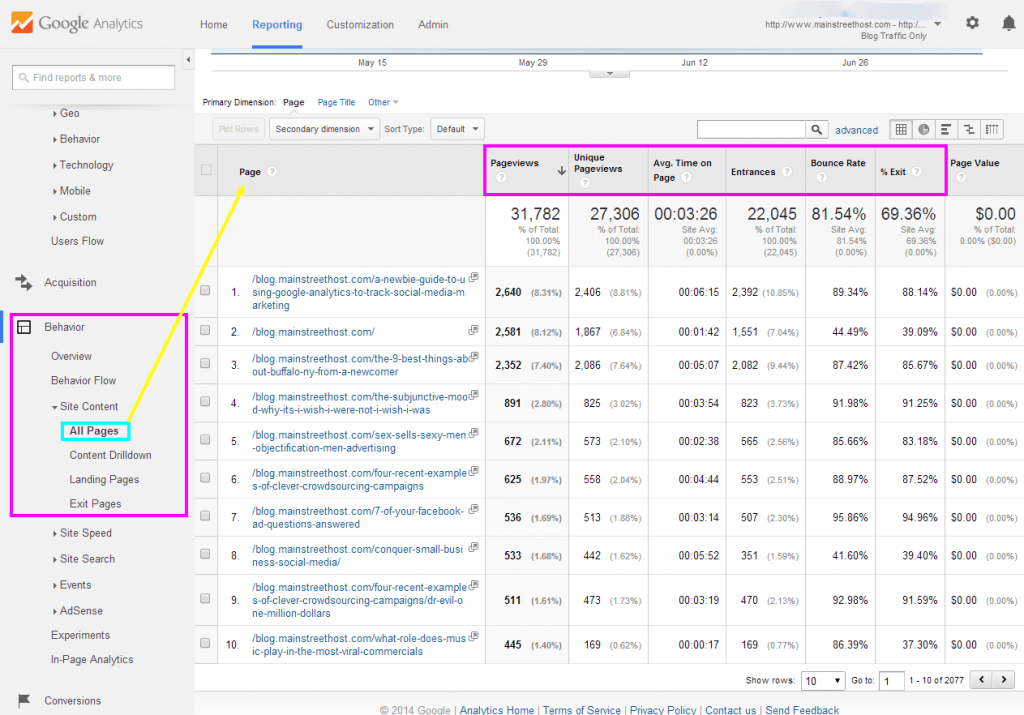Website traffic is tricky. You (the business owner and/or marketing manager) want to see a ton of traffic heading to your site.
A common misconception, many business owners believe website traffic is the most important metric of website marketing online. They think the more traffic I get, the better my site is and the more business I will get. However, consider this: how valuable is a ton of traffic if no one is converting into a customer, or a lead at the very least? Where’s the value in unqualified traffic?
I’m going to be blunt here; there’s not much value in high traffic volume that doesn’t convert.
You’ll know if people are converting through form completions, phone calls, purchases, and when they’re walking into your business (citing your website a referral, of course). Sure, you think the more traffic you get the more likely you are to have more customers. But if they’re not finding your website for the right reasons, the excess of traffic doesn’t mean much for your business or your website’s success.
And that’s where it’s tricky.
There’s a fine line between high traffic due to an offer, exceptional blog posts, links from a credible source, successful email campaigns or other qualified reasons, and high traffic due to unrelated, but high-ranking keywords and phrases, or otherwise manipulative website marketing practices.
Is Your Website Traffic Qualified Traffic?
While there are several ways to determine this, here are a few questions you should ask yourself:
-
What Is the Goal of My Website? (Micro and Macro Goals)
- To sell products
- Provide information
- Provide a service(s)
- Have people come to my store
- Capture potential clients’ information
- Grow email list
-
Does My Website Allow/Entice Visitors to Complete Said Goals?
- Are there clear conversion paths?
- Is it clear what I want from my visitors?
-
Are People Bouncing off the Site Immediately?
- What’s my site bounce rate?
- How long are visitors staying on the site?
- How many and what pages are my visitors visiting?
-
When Are There Spikes/Lulls in Traffic?
-
What Can I Conclude from This?
- Did I publish a post?
- Did I send out an email campaign?
- Did I post to social media?
-
-
For Local Businesses: Is My Traffic Local Traffic?
- Where is my traffic coming from?
- What cities and regions am I targeting?
-
Are People Visiting from These Areas?
-
If you’re wondering how to collect all this data, I have two words for you: Google Analytics.A free tool that collects website data, if it’s not installed on your website, I suggest you go do so now. I’ll wait…
If you’ve just installed Google Analytics, it’ll take some time for it to collect data, so be patient. For this post, I’ll be using site statistics from the Mainstreethost blog ranging from May 1, 2014 to July 7, 2014.
For your reference, here’s a little glossary of words (courtesy of Google Analytics) you’ll need to know throughout this post:
- Session: “the period of time a user is actively engaged with your website, app, etc.”
- User: website visitors with more than one session inside the designated date range.
- Bounce Rate: the percentage of users who view one page and leave the site without going any further.
- Pageviews: the total number of pages viewed.
- Pages/Session: the average number of pages visited during a session.
- Avg. Session Duration: the average time spent on the site during a session.
Here is a screenshot of the Audience Overview. This section – the default section – shows basic numbers about the site’s metrics.
As you can see, there are periodic dips in our blog’s traffic. After looking into it further, these dips are on Saturdays and Sundays. From this, I can conclude that the decrease in traffic can be due to the lack of posting on the weekends, or that our audience isn’t reading as much as they do during the week.
One way to test this theory would be to schedule some posts for the weekend and see how well they perform. By testing, I’ll get a better idea of what our audience responds to. It could simply be that posting on the weekends won’t make a huge different in our traffic, or I might find that traffic skyrockets resulting in increased forms completed. That’s why testing is such an important element of all types of marketing – inbound, social media, traditional, etc.
If your website is getting a great amount of traffic, but you aren’t seeing conversions, it’s worth taking a look at where your traffic is coming from. When you know how people are finding you, you’ll have a better idea of what types of promotion work best for you.
Below is an overview of our blog’s traffic sources, also referred to as acquisition.
It’s obvious that the majority of our traffic comes from organic search. Unfortunately, last September Google stopped providing the keywords people search, so I don’t know exactly what they’re typing into Google (the search engine the majority of our visitors use).
Regardless of this infuriating roadblock, there are other ways for me to make conclusions about what my visitors are searching for to find my content, like exploring the site content statistics.
One of my favorite sections to explore, you can learn a lot from the content and pages your visitors are consuming. While we don’t have this set up through Google Analytics (we use other software), I recommend tracking conversions on your site. This will give you a better idea of where people are converting (aside from the obvious) and how they’re arriving at that point. You can even use Google Analytics to track your social media marketing efforts.
More than just looking to see what pages your visitors are visiting, evaluate how long they’re staying on the page, bounce rates, and what pages people are exiting your site from. These metrics will give you a better idea if you need to adjust the content, calls-to-action, and even the images.
For example, let’s say your website’s homepage bounce rate is 89%. This tells me that the vast majority of your visitors are leaving without ever going through the rest of your website. Unless you have just one page, this is not good. You want people to visit multiple pages, fill out a form, give you a call, etc. If they’re leaving without doing anything, no matter how much traffic you receive, what good is it? The good news is the metrics Google Analytics provides are a great jumping off point for making modifications to your website.
What Should Do When You Determine Your Website’s Traffic Isn’t Valuable?
A simple response to this is to make changes!
One of the common culprits of “invaluable” traffic is unrelated or just simply terrible keywords leading visitors to your website. Think of it this way; if you’re searching for coffee mugs and what looks like a great result in the SERP turns out to be a site full of different types of coffee beans, you’re going to be pretty frustrated. While the two may be related, when a prospect lands on a website that doesn’t immediately address the initial reason they came to a website, they’re going to leave. And that right there isn’t valuable traffic.
When terrible keywords are the culprit, I suggest researching the words and phrases people are looking for in terms of your products/services. By eliminating the keywords bringing the unqualified traffic, you’re going to find that the people who land on your website are more qualified and more likely to buy your products/services.
An alternative option in the case of the coffee mugs and coffee beans is if coffee mugs are a great source of traffic, you might consider adding them as a product. Ideally, this will help create more business for you – from the mug and bean aspect of the business – and that traffic will no longer be unqualified, but rather qualified and valuable traffic.








